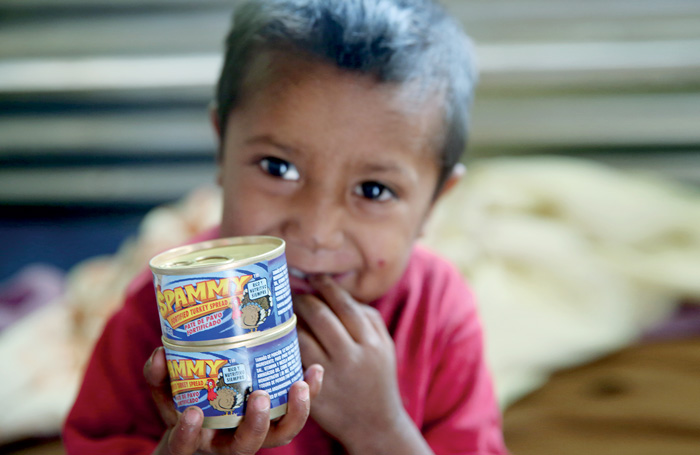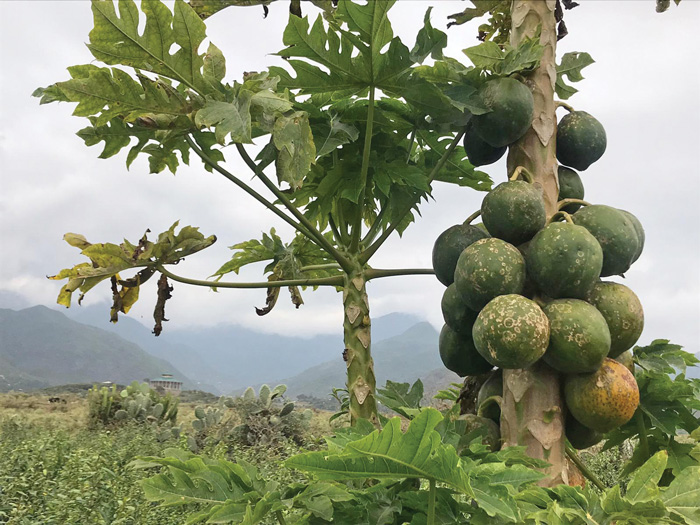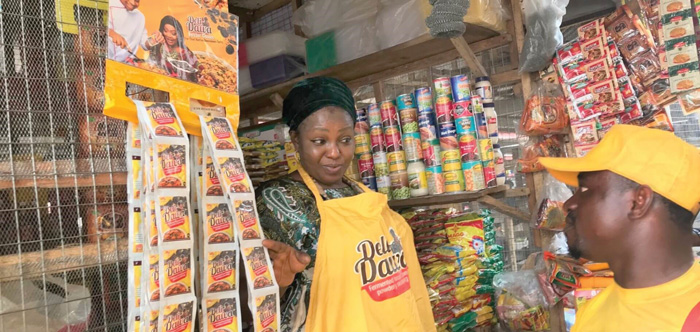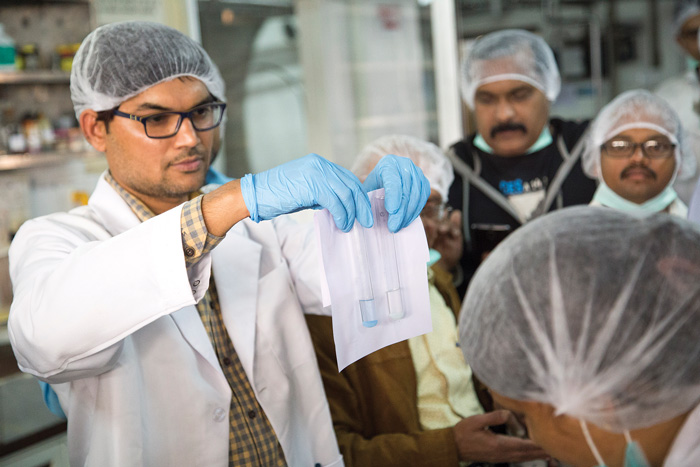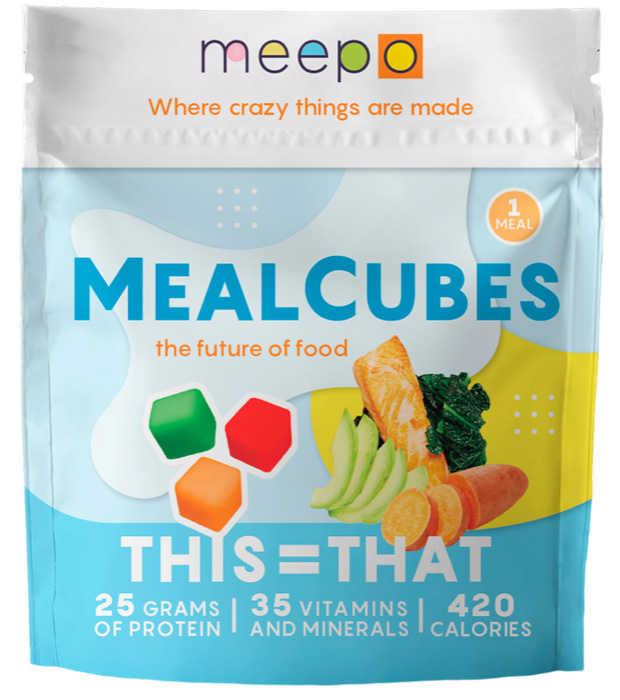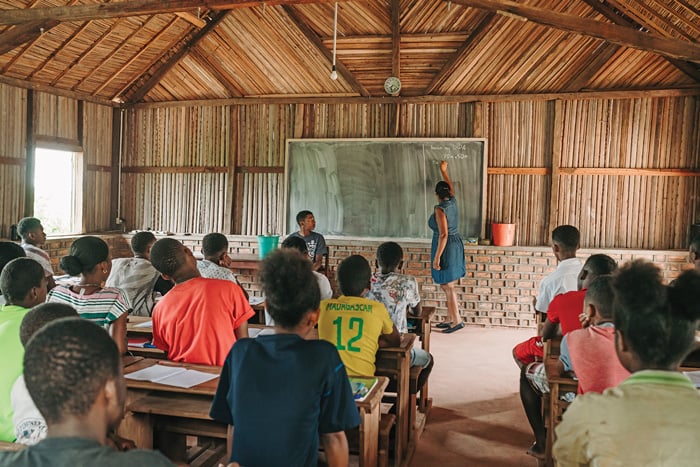
Feeding the World Better
CPG companies are tackling food insecurity around the globe, tailoring product development initiatives to local market nutrition needs.
Article Content
Canned turkey puree that seamlessly adds protein to Guatemalan cuisine. Low-salt seasonings that cut dangerously high sodium levels in Japanese diets. A smartphone app at a retailer in Turkey that gamifies healthy eating and rewards produce purchases. Infant formula that’s fortified with iron to address a particular deficit in the Egyptian diet. A new high-fiber, ready-to-eat cereal to boost the microbiome of Latin Americans. Upcycled waste from papaya processing that is combined with whey into a tasty snack for children in Ethiopia.
Over the last decade or so, global food companies have fielded these products and many more aimed at appealing to indigenous tastes and leveraging local resources to help curb malnutrition and hunger. In spots across the developing world, such initiatives not only are helping to alleviate diet and hunger problems bite by bite, but they’re also providing valuable lessons to companies, governments, and nongovernmental organizations (NGOs) about how to become more effective in their Sisyphean struggle to fill every stomach around the globe, every day.
Hunger and poor nutrition are ancient scourges, of course, and they’re ever more threatening as the world’s population stays on course to balloon to about 10 billion people by 2050, from almost eight billion now, and from five billion just 35 years ago.
The grim statistics about food insecurity are more ponderous than any other measure of the state of humanity. There were as many as 800 million hungry people in the world in 2020, according to this year’s State of Food Insecurity in the World report jointly produced by the Food and Agriculture Organization of the United Nations, the World Health Organization (WHO), and other groups. Food insecurity affects about one-quarter of the world’s population. About 2 billion people globally suffer from malnutrition, according to WHO, and as a result, one in five children in some regions experience stunting, according to UNICEF.
But while it’s people in developing countries who largely have sustained the suffering from these conditions, the evolution of post-industrial society in the West has added two more problems. Obesity and diabetes have sprung to crisis proportions in developed countries where the availability of food isn’t an issue but poor dietary choices have created epidemics of these two diseases. In fact, WHO says that the number of overweight and obese worldwide about equals the number of people who are malnourished.
Of course, warnings about an unabated inability to feed ourselves have long been an important aspect of apocalyptic fear mongering, from Paul Ehrlich’s The Population Bomb in 1968 to today’s global-warming activists who point out that changing climate patterns have begun to wreak havoc with agricultural production. And doctors and dietitians have been clanging the bell over runaway diabetes and obesity in the West for nearly as long.
Denizens of the developed world have been gamely trying to stem the toll of obesity with slow progress in a turn toward more healthful diets and more physical activity. And over the last decade or so, health leaders’ battle against malnutrition has been tending to “improve very slowly,” says Nicolas Gausseres, vice president of health for Group Danone.
But COVID created a major disruption in any progress. The disease—and how governments and businesses reacted to it—shut down economies, crimped farm output and raw materials processing, and jangled supply chains everywhere, making food production and distribution an unexpected challenge that is still being resolved even as the pandemic hangs on. “COVID,” Gausseres estimates, “increased the number of undernourished people by more than 100 million.”
Private Sector Support
It’s little wonder then that the United Nations (UN) recently framed the hunger crisis as an area where even the broad-based organization that represents a collection of most of the world’s governments could use some help from the private sector.
“It’s time to end this suffering,” said David Beasley, executive director of the UN’s World Food Programme (WFP), in September as he announced the Zero Hunger Private Pledge. “To succeed, WFP and the entire community need the creative drive, energy, and commitment of the private sector.”
Fortunately, the severity of global hunger and malnutrition has grown and become more apparent precisely during a new era in which companies are paying more attention than ever before to why they do what they do. They’re reflecting on “purpose” at the prompting of consumers, employees, and increasingly proactive efforts by major shareholders to push environmental and social governance (ESG) goals. And for food companies with a global purview, their ESG strategies quite naturally are landing in the area of solving hunger and malnutrition.
Kellogg, for example, has come up with a new strategy it calls Better Days, which crystallizes its “purpose, platform, and commitment,” says Neil McGowan, senior director of global well-being and regulatory for the company.
Addressing hunger and malnourishment is a major aim of this initiative, under which Kellogg has pledged to “nourish one billion people with our foods,” “feed 375 million people in need with food donations and expanded child-feeding programs,” “nurture people and our planet by supporting one million farmers,” and engage “1.5 billion people in the issue of global food insecurity through advocating on behalf of children facing hunger, ensuring an ethical supply chain, and supporting diversity and inclusion.”
Clearly, companies are combining altruistic aims with business goals in nearly every innovation aimed at the truly hungry. The benefits to the world from corporate commitments to fight food insecurity, and from the help that comes through their products, donations, education initiatives, and community-building programs, are obvious. But also, such efforts strengthen CPG and ingredient companies by testing and stretching their R&D and technology capabilities in ways that wouldn’t otherwise occur. And, of course, there are business opportunities for them in probing markets in the developing world, getting consumers there to appreciate new products and brands, and helping boost the sustainability of agricultural supply chains and subsistence lifestyles.
The key for CPG companies in North America, Europe, and Asia to make a difference, however, is how they translate these kinds of sublime, ESG-oriented aims into improvement in the feeding and nutrition of individual humans around the world. For huge enterprises whose stock-in-trade is developing and deploying things that people want to eat, this effort is being translated into a collective push to innovate products especially aimed at the food insecure and malnourished.
NGOs like the Consumer Goods Forum are there to help them. “You can have global ambition, but unless you’re understanding local food cultures and local behavior change, it’s difficult to have impact on the ground,” says Sharon Bligh, director, health & wellness, for the not-for-profit that works with retailers, manufacturers, academia, and governments to battle hunger and malnutrition, and currently is engaged in such projects in 10 countries.
“We help connect companies that want to make a social impact going beyond the short term,” she says.
Canned turkey puree that seamlessly adds protein to Guatemalan cuisine. Low-salt seasonings that cut dangerously high sodium levels in Japanese diets. A smartphone app at a retailer in Turkey that gamifies healthy eating and rewards produce purchases. Infant formula that’s fortified with iron to address a particular deficit in the Egyptian diet. A new high-fiber, ready-to-eat cereal to boost the microbiome of Latin Americans. Upcycled waste from papaya processing that is combined with whey into a tasty snack for children in Ethiopia.
Over the last decade or so, global food companies have fielded these products and many more aimed at appealing to indigenous tastes and leveraging local resources to help curb malnutrition and hunger. In spots across the developing world, such initiatives not only are helping to alleviate diet and hunger problems bite by bite, but they’re also providing valuable lessons to companies, governments, and nongovernmental organizations (NGOs) about how to become more effective in their Sisyphean struggle to fill every stomach around the globe, every day.
Hunger and poor nutrition are ancient scourges, of course, and they’re ever more threatening as the world’s population stays on course to balloon to about 10 billion people by 2050, from almost eight billion now, and from five billion just 35 years ago.
The grim statistics about food insecurity are more ponderous than any other measure of the state of humanity. There were as many as 800 million hungry people in the world in 2020, according to this year’s State of Food Insecurity in the World report jointly produced by the Food and Agriculture Organization of the United Nations, the World Health Organization (WHO), and other groups. Food insecurity affects about one-quarter of the world’s population. About 2 billion people globally suffer from malnutrition, according to WHO, and as a result, one in five children in some regions experience stunting, according to UNICEF.
But while it’s people in developing countries who largely have sustained the suffering from these conditions, the evolution of post-industrial society in the West has added two more problems. Obesity and diabetes have sprung to crisis proportions in developed countries where the availability of food isn’t an issue but poor dietary choices have created epidemics of these two diseases. In fact, WHO says that the number of overweight and obese worldwide about equals the number of people who are malnourished.
Of course, warnings about an unabated inability to feed ourselves have long been an important aspect of apocalyptic fear mongering, from Paul Ehrlich’s The Population Bomb in 1968 to today’s global-warming activists who point out that changing climate patterns have begun to wreak havoc with agricultural production. And doctors and dietitians have been clanging the bell over runaway diabetes and obesity in the West for nearly as long.
Denizens of the developed world have been gamely trying to stem the toll of obesity with slow progress in a turn toward more healthful diets and more physical activity. And over the last decade or so, health leaders’ battle against malnutrition has been tending to “improve very slowly,” says Nicolas Gausseres, vice president of health for Group Danone.
But COVID created a major disruption in any progress. The disease—and how governments and businesses reacted to it—shut down economies, crimped farm output and raw materials processing, and jangled supply chains everywhere, making food production and distribution an unexpected challenge that is still being resolved even as the pandemic hangs on. “COVID,” Gausseres estimates, “increased the number of undernourished people by more than 100 million.”
How Hormel Has Helped
On its own more than a decade ago, Hormel Foods concluded it could supply products to developing countries where lack of protein is a major component of malnutrition and hunger, thanks to the company’s expertise in meat and shelf-stable products. Researchers targeted Latin America because, in particular, local diets there “rely mainly on starchy staples—corn and beans and rice and tortillas,” says Melissa Bonorden, R&D development leader for Hormel.
“There’s not a lot of high-quality protein there. We knew a meat product could be important. There’s also not a lot of diversity in these diets, so we wanted to bring in concentrated sources of nutrition,” Bonorden continues. “And we learned that vitamin D and vitamin B12 are in especially low concentrations, so we wanted to focus on those micronutrients.”
Soon after the effort started in 2008, Hormel focused on Central America, and then Guatemala, based on relationships with NGOs, including Food for the Poor. “We relied on these partners,” Bonorden explains. “Rather than making assumptions from the American Midwest about what was needed, we worked with them on the ground to understand the dietary habits and nutritional deficiencies in the standard diet in Guatemala.”
Hormel and its Jennie-O turkey unit came up with a shelf-stable puree of white and dark turkey meats called Spammy, so that a cook can simply stir it into whatever they’re making. “If they’re going to make rice and beans, they stir it in,” Bonorden says. “They can use it in eggs, or in a pizza topping. It just gets integrated into their regular diet and requires little behavior change. It’s not a new food.”
Spammy is packaged in a 3-ounce, shelf-stable can. “Not everyone in Guatemala has refrigeration, so it was important to come up with a product that didn’t require it,” Bonorden says. The company now distributes about 2 million cans a year, mostly via school kids, who take it home to their parents.
Over the past few years, Hormel has added an education component to the program, helping establish more than 20 different “learning centers” with NGOs in Guatemalan villages. And, Bonorden says, the whole enterprise is a bonus for the increasing number of Hormel employees who want to travel south and help out. “They can help distribute product and serve meals and just help with volunteer efforts there,” Bonorden says.
Addressing Local Needs
Danone surveyed the situation in Egypt a few years ago and found that iron deficiency is a huge problem among Egyptian children and adults. “We decided to take this as a challenge and refocus our efforts, on both kids below three years old and kids above three years old,” Gausseres says. Danone came up with iron-fortified infant formula products under its Bebelac brand, and flavored milks and yogurts with “Vita-Iron” under its Dango brand for older kids, and then added an education program for parents and the medical community “with communications to raise awareness around these deficiencies and different ways to fight it.”
Kellogg addresses malnutrition and hunger as important elements of an overall product development strategy that emphasizes two things: improving the human microbiome through fiber-rich foods, and leaning into plant-based protein because of the company’s conviction that the globe can’t support an overreliance on animal-based products.
Fortification of its ready-to-eat cereals with vitamins and minerals long has been a key part of Kellogg’s approach to the market, and now the company is homing in on “fiber intake [that] remains woefully low across the globe,” McGowan says. This includes the recent release of Nutri Digest, a new fiber-fortified cereal brand in Latin America.
Wanting to help mitigate food insecurity and malnutrition isn’t just a pursuit for consumer-facing companies but also for the industry’s B2B community. For example, Arla Foods Ingredients is mainly a producer of whey ingredients. It is working with the Global Alliance for Improved Nutrition (GAIN) and other partners this year to launch a four-year project to turn papaya fruit that otherwise would be wasted into a nutritious and affordable snack for low-income consumers in Ethiopia.
Papayas are a source of income for more than 890,000 farmers in Ethiopia. They’re also highly nutritious, being particularly rich in vitamins A, B, and C. But each year, about 30% of the crop is lost to spoilage. The company’s efforts have focused on drying major quantities of papaya close to where it’s grown—perhaps via solar energy—to provide the pulp for a dried-fruit protein bar that contains milk and whey-based ingredients.
“We’ll fortify it with vitamins and minerals and hope to end up with a tasty, safe, affordable snack targeting children,” says Charlotte Sørensen, business development manager and senior project manager for affordable nutrition activities for Arla Foods Ingredients.
Ajinomoto is known globally as a major provider of umami seasoning through its production of monosodium glutamate (MSG), but the company has been harnessing its overall expertise in ingredients and seasonings for a project in Nigeria to develop a local seasoning called DeliDawa.
Traditionally, Nigerian women produce a seasoning locally that is made from fermented locust beans and called ududu. Preparing it is labor-intensive and is done in the open air; one unfortunate aspect is that ududu is highly pungent and attracts lots of flies. Ajinomoto researchers believed that a product called natto, made from fermented soybeans instead of locust beans, could sidestep the negatives of making ududu and still satisfy Nigerian tastes.
“It took around one-and-a-half years, but we were able to develop DeliDawa, which is made under much more hygienic conditions than ududu, is sold at a very affordable price, is convenient to use, and frees the local women from laborious work,” says Manasi Deodhar, Ajinomoto’s global communications manager. “We are also turning our attention to similar local seasonings in surrounding countries.”
But Ajinomoto’s experiences also demonstrate that delivering new products that abate hunger or food insecurity somewhere on the globe isn’t always as easy as having effective R&D. For example, the company has been attempting to get a plant-based, ready-to-use-therapeutic food (RUTF) into the field because it believes the product could treat severely malnourished children around the world. An RUTF is an energy-dense, mineral- and vitamin-enriched, fortified food that can be consumed with no preparation needed. About 80% of RUTF procurement is done by the United Nations International Children’s Emergency Fund, and it currently accepts only RUTFs made with peanut and milk, per standards set by WHO.
Ajinomoto’s proposed plant-based RUTF is made with soy, maize, and sorghum and fortified with added amino acids. The company worked with the Japanese International Cooperation Agency and some NGOs to prove the product’s efficacy in a trial in Malawi, Deodhar says. It can be mass-produced at about 10% lower cost than what it would replace.
“But WHO guidelines say that more than 50% of the amino acids in RUTFs need to come from dairy, and so our product still isn’t approved,” she says.
Roles for Smaller Players
Even with increasing involvement by the titans of the world’s food business, there’s also a role to play for smaller companies, who number in the thousands in the developing world. For example, in India, GAIN has been working with more than 300 makers of edible oils that are a crucial part of diets in the world’s second-most-populous country. Already, GAIN and allies have managed to get companies that supply about 70% of the nation’s cooking oil to fortify their products with vitamins A and D, and now the goal is to get the cooking oil industry to agree to new national nutritional standards.
While 18 big suppliers representing about 40% of the market have backed the efforts so far, the key will be getting agreement from most of the 289 small companies that comprise about 60% of the market, says Tarun Vij, GAIN’s director for India and also head of global drivers for food system change for the organization.
“They’re the guys who reach the last mile, the smaller districts in our country, the schools in the tribal areas, with this important advancement,” Vij says. “While it would be convenient to work only with the bigger players, it’s extremely important to get the small ones in these markets on board.”
Developed nations also have nutritional blind spots beyond their universal struggles with obesity and diabetes, and CPG companies are addressing those, too. Ajinomoto worked with the Japanese government to target salt consumption, which is generally high in Japan, especially in the Northeast, having much to do with high consumption of preserved foods.
So, beginning in 2014, Ajinomoto teamed with the government and local media in Iwate Prefecture in a concerted effort to cut salt consumption there, largely by introducing its own seasonings as a substitute. MSG has two-thirds less sodium than table salt, and Ajinomoto says it doesn’t compromise flavor.
The effort featured seminars, distribution of low-salt recipes in grocery stores, media attention, and even the local government’s declaration of the 28th of each month as “Salt Awareness Day.”
“We helped reduce people’s salt intake by 10% to 20%,” Deodhar says. “We have expanded this program to six prefectures across the Tohoku region in northern Japan, and plan to grow it to another 39 in the future.” Plus, she adds, Ajinomoto expects to replicate the approach in other developed countries where high salt intake is a health problem, including Brazil and Vietnam.
Tapping Into Retail Partnerships
Retailers can play a role too. For instance, the Consumer Goods Forum works with its company members and with food retailers to create and promote healthy three-ingredient recipes that involve a CPG product and a vegetable. They calculate the recipe’s nutritional bona fides and promote it in the store and online.
“Essentially, the CPG basically subsidizes the price of the vegetable, and the consumer gets the vegetable for free,” Bligh says. “Everyone wins. It increases the sales of organics and vegetables.”
In another approach, the Migros supermarket chain in Turkey worked with the Forum to create a smartphone app that encourages purchases of produce and other healthy foods by providing information, gamification of their choices, and price discounts on fruits and vegetables. Fifty-two percent of shoppers at Migros opted into the app during the test and began tracking their healthier-eating progress quarterly, and sales in better-for-you food categories at Migros increased by 5% during the test.
When the Forum took the basic app model to Colombia, they worked with Exito, a supermarket chain in the northern part of the country where iron deficiency is a major aspect of malnutrition. Through the app, Exito promoted and price-discounted shrimp, which is high in iron, and boosted consumption.
There was another element in the success of the nutrition app in Migros and Exito: backing by health, government, and political leaders, which can have outsized impact in developing countries compared with First World audiences, who may believe that they are too sophisticated for such appeals. In Turkey, for example, the minister of health was heavily involved. And in Colombia, the effort even managed to recruit First Lady Maria Juliana Ruiz. “Those kinds of things really work,” Bligh says.
In spreading the word about iron-fortified Dango in 2020, Danone put up billboards in Cairo featuring the brand’s red-and-blue monkey mascot. And to support its efforts to promote gut health and gut microbiome diversity in Australia and New Zealand, Kellogg promoted what it calls “the world’s first functional zoo displaying animatronic, interactive gut bacteria,” highlighting the importance of feeding fiber to good bacteria to maintain digestive balance.


